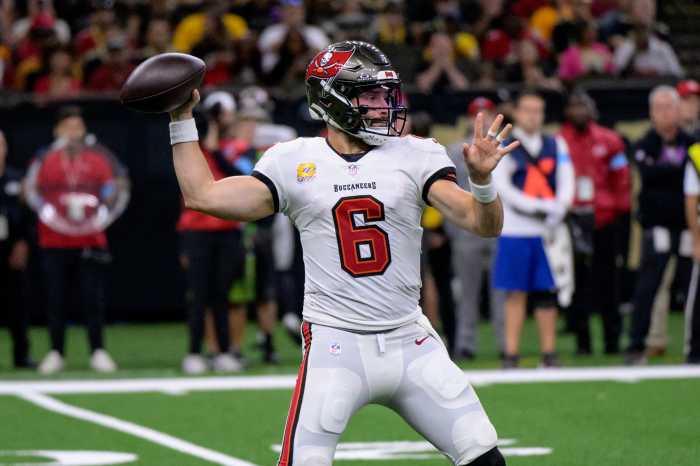See Gang Map After recent reports of gang violence in his district, Assemblyman Jose Peralta got some divine intervention. Well, not exactly.
The assemblyman decided to seek the help of the Guardian Angels not necessarily an ethereal group, more a civilian patrol that substitutes haloes and wings for red berets and jackets to combat the prevalence of Mexican gangs in Corona and Elmhurst.
Though they have always been a presence in Queens, the Guardian Angels, which was founded 25 years ago, have begun to patrol the streets of Corona at the assemblymans behest. To foster the partnership, Peralta has provided the Angels with a base of operation on 37-77 103rd Street. He will hold a press conference this Thursday to officially hand over the keys to the building.
"We really have no group that addresses this issue," said Yonel Letellier, a staff aide for Assemblyman Peralta. He said the Angels are no longer the group that began 25 years and was occasionally criticized for vigilante tactics. Peralta chose to start this program to combat gangs in his district, like the Crazy Homies, Sombra Negra and Mexican Boys, because it involved grass roots methods to search and find individuals involved.
The new Guardian Angels, according to Arnaldo Salinas, the groups senior director, work with the community to fight crime.
"We use the untapped resources of the community for its betterment," said Salinas. He said the initial patrol group in Corona will be small and will be walking the streets on Thursdays, Fridays and Saturdays. But, he said, as the Angels recruit from the community, their operation will grow and extend throughout the week. Angels can already be spotted at the intersection of Roosevelt Avenue and Junction Boulevard seeking new members.
Salinas said the Angels, with groups throughout the country and the world, have been successful in fighting gangs for two reasons: their presence and education.
The watchful eyes of Guardian Angels at high crime locations, he said, deters gang members. As for education, Salinas organization targets both youth and parents. It has a junior Guardian Angels program for children after school.
"Its not good enough to tell a kid you shouldnt join a gang," said Salinas, noting that children with too much idle time are prone to gang recruitment. "We give kids another avenue."
It also holds education programs for parents and teachers.
"Guardian Angels want to teach parents to know the danger signs," said Salinas.
Peraltas initiative demonstrates the prevalence of gang activity in the borough and indicates that the problem cannot be solved by the NYPD without the help of the community.
No longer simply groups of rival neighborhood youths engaging in delinquent behavior, todays gangs also engage in serious violent crimes, prostitution and high stakes weapons and narcotics trafficking. To combat the problem, which has migrated from inner cities to the suburbs, the NYPD has established units that target gangs, not only on the streets, but where they often begin: prison.
As more gang members find their way to prison, the correctional system has become a hub of gang activity. Rikers Island boasts Bloods, Crips, Five Percenters and more than 50 others whose members are as diverse as New Yorks population. While the figures can be distressingthe Department of Correction (DOC) estimates that 12% of the inmate population are gang membersthat concentration has led to innovations that collar many more.
In 1994, the DOC created the Gang Task Force to study gang activity in prison. Two years later, the task force was expanded into the Gang Intelligence Task Force, which was created to gather information on individuals identified as members of high risk groups. In 1997, the Gang Intelligence Unit (GIU) was formed and a database of known gang members was built. Today, this tracking system records every risky inmate, including information like personal data, gang affiliation and rank, enemies, front and side headshots, tattoos and distinguishing markings, height, weight and address.
Units such as the Queens Gang Unit and Anti-Bias Youth Gang Bureau of Queens, work with school safety officers of the Division of School Safety to identify and prevent gang violence in schools. They train school officials to recognize gang colors, fashions and hand signals and ensure that gang incidents in schools are vigorously and quickly prosecuted.
According to Salinas, knowing if a youth is involved with a gang is difficult to see. From their clothes to their hand signals, gang members have become more sophisticated. A simple crease in a white shirt, Salinas said, can indicate if a person is a member of the Crips or Bloods. Sport jerseys are also a symbol of affiliation. Members of the Latin Kings have been known to wear Pittsburgh Pirate uniforms, because of the yellow and black colors.
One of the most valuable tools to decipher gang activity used by the police department anti-gang units is graffiti interpretation. Not all vandalism can be attributed to gangs, but gang members do use graffiti as a bulletin board that identifies turf borders and sends a message to rival gang members. The various symbols may denote the gangs purpose and members, their rival and a plan of attack. This is not to say that said graffiti will clearly spell out "Bloods." Most gangs use code words and nicknames, such as Crips graffiti reading BK, which stands for Blood Killer.
With the best cure for gangs being prevention, the NYPDs most effective weapon in the fight against gang violence is knowledge.
To join the Guardian Angels, prospective members can go to their Corona headquarters at 37-77 103rd Street.






























